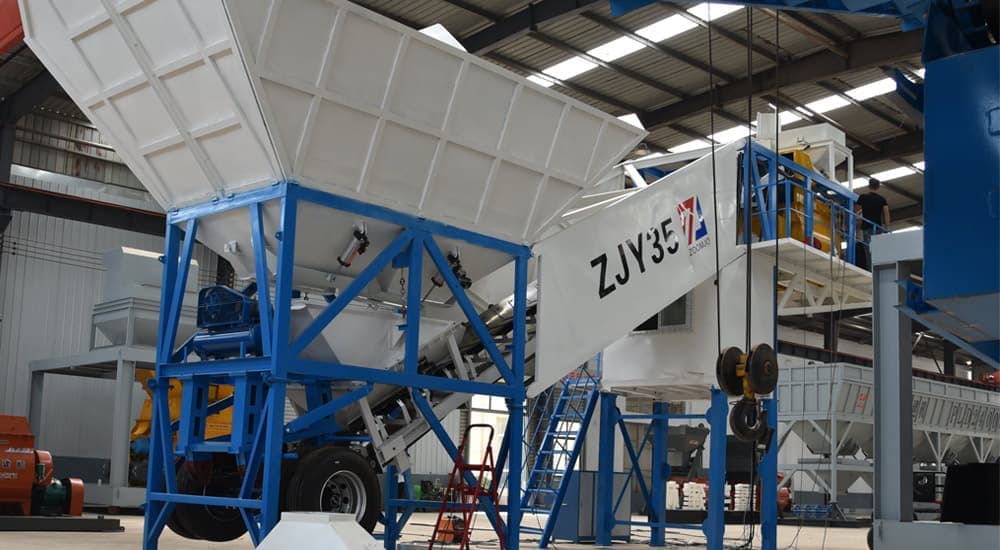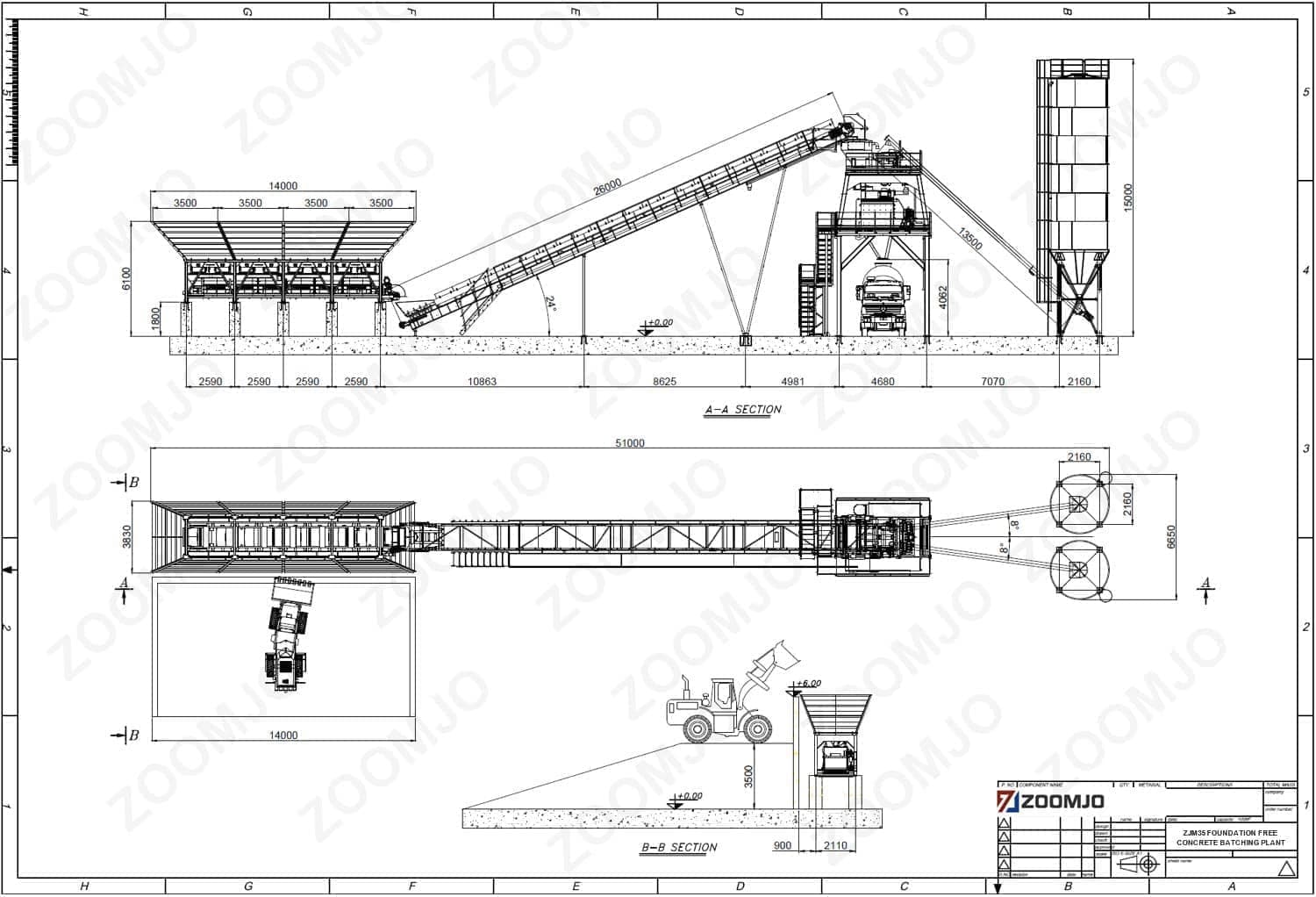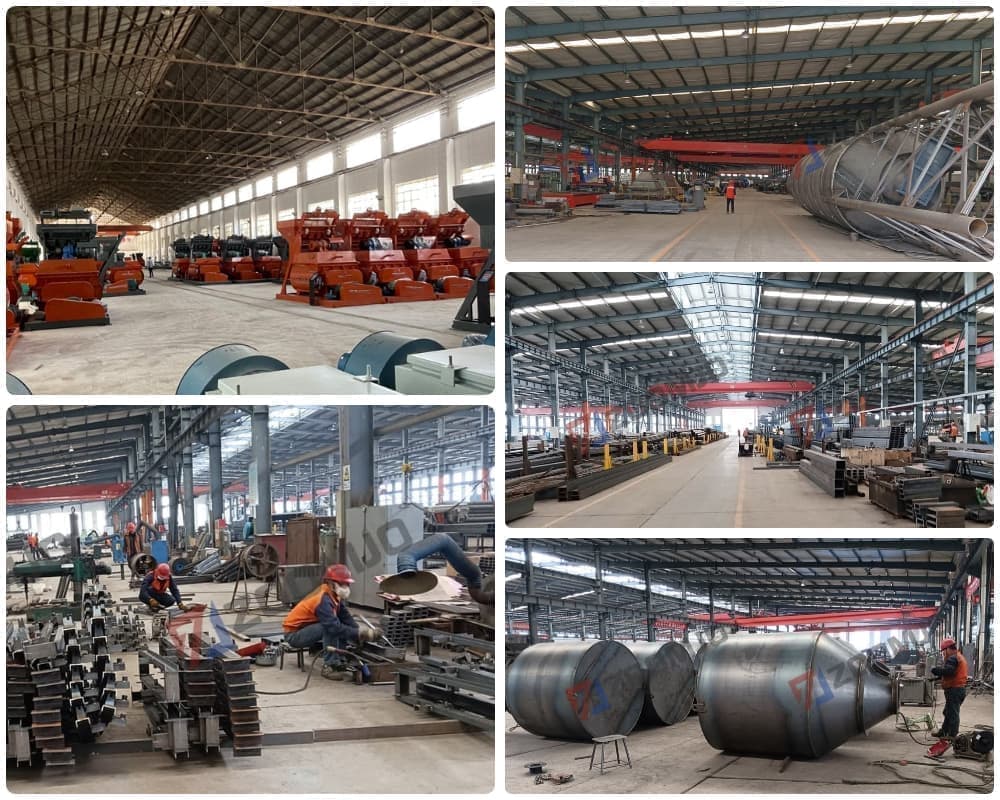How Much Does It Cost to Build a Concrete Batching Plant?

In the construction industry, a concrete batching plant is a key facility for producing high quality concrete. However, how much investment is required to build such a batching plant? The answer to this question depends on a number of factors, including the size of the batching plant, the type of equipment, the cost of building the site, and other associated costs.

Below is a detailed analysis of the investment cost of building a concrete batching plant to provide a valuable reference for potential investors.
1. Main cost determinants
Equipment investment is the core of building a concrete batching plant, occupying an important part of the total investment. The main factors affecting the price of the equipment include the production scale, the form of the batching plant and the degree of automation.
Production scale
The production scale directly determines the complexity and cost of the equipment. According to the production demand and scale size, equipment investment can be divided into the following three categories:
-
Small-scale batching plant (e.g. HZS35): suitable for small-scale construction works, rural township construction or temporary projects. The equipment is relatively simple, with limited production capacity and low investment cost, ranging from about US$42,800-90,000 USD.
-
Medium-sized batching plant (e.g. HZS90-120): suitable for medium-sized construction works, bridge and road construction. The equipment configuration is more complete, the production capacity is moderate, and the investment cost is about 70,000-150,000 US dollars.
-
Large-scale batching plant (e.g. HZS180-240 and above): suitable for large-scale infrastructure construction, high-rise building, large-scale precast concrete parts factory, etc.. The equipment configuration is complicated, the automation degree is high, the production capacity is powerful, and the investment cost is more than US$150,000, even up to millions of dollars.
It should be noted that the above is only a rough estimate of the acquisition cost of the equipment, the actual price will fluctuate due to equipment brand, configuration, technical level and other factors.

Types of concrete mixing plant
Based on mobility, concrete batching plants can be categorised into stationary and mobile types, which differ significantly in terms of investment and application scenarios:
Stationary Batching Plants:
-
The initial investment is higher, as a more complete infrastructure construction is required, including permanent foundations, plant buildings, etc.
-
Requires a fixed site and is not easy to relocate once built.
-
However, for long-term use, they are usually more economical and suitable for long-term, large-scale concrete production needs due to their high productivity, stability and relatively low maintenance costs.
Mobile Batching Plant:
-
The cost of the equipment is relatively high, as it needs to integrate more functions and equipment to ensure mobility, such as self-contained chassis and detachable structure.
-
The infrastructure requirements are low, requiring only simple site levelling for rapid deployment and commissioning.
-
Suitable for temporary or short-term projects, and for works that require frequent changes of construction sites, such as linear works on roads and railways.
Stationary VS Mobile Batching Plants
| Comparison items | Stationary Batching Plant | Mobile Batching Plant |
|---|---|---|
| Equipment type | Fixed batching plant | Mobile Batching Plant |
| Price range | Small (HZS25-35): $40,000-$70,000 Medium (HZS50-90): $80,000-$150,000 Large (HZS120-240): $150,000-$200,000 | Small (HZS25-35): $4.US$50,000-80,000 Medium-sized (HZS50-90): $70,000-$120,000 Large (HZS120-180): $150,000-$250,000 |
| Advantages | ||
| Disadvantages | ||
| Standard configuration |
Investors should weigh the advantages and disadvantages of the two types according to the type of project, duration, site conditions and other factors, and choose the most suitable type of batching plant.
Degree of automation
The higher the degree of automation, the more advanced the control system, the more complex the sensors, control components and software systems required, and therefore the higher the price of the equipment. Higher levels of automation usually result in higher productivity, more accurate batching control and lower labour costs, but the initial investment is also relatively large.
It can be seen from the above analysis that the investment in equipment is affected by a combination of factors. When making decisions, investors should fully consider the actual needs and budget of their own projects and choose the most suitable equipment configuration and type to achieve the best investment benefits.
2. Site construction costs
Site construction is another important expense in addition to the cost of equipment, and consists of the following:
-
Land costs: Land costs are affected by a variety of factors such as geographic location, nature of the land, supply and demand, etc., and vary widely. Land prices are higher in urban centres or economically developed areas, while suburban or rural areas are relatively lower. Investors need to conduct detailed market research and assessment based on the location of the project.
-
Infrastructure Development: In order to ensure the normal operation and safe production of the dosage station, a series of infrastructure development is required, mainly including:
-
Hardening of foundations: Levelling, compaction and hardening of the site to withstand the weight of the equipment and vibrations during operation.
-
Office building and laboratory: construction of office space, management personnel dormitory and concrete quality testing laboratory.
-
Material storehouse: used for storing cement, gravel, aggregate and other raw materials, need to consider moisture-proof, ventilation and other factors.
-
Drainage system: A perfect drainage system is built to prevent rainwater from accumulating and affecting production and the environment.
-
Environmental protection facilities: including dust removal equipment, noise reduction equipment, sewage treatment system, etc., in order to meet the increasingly strict environmental regulations.
The construction costs of these infrastructures are closely related to factors such as the size of the site and the complexity of the project, and require detailed project budgets.
3. Other related costs
In addition to equipment and site construction costs, there are a number of other associated costs that need to be included in the investment budget:
-
Installation and commissioning costs: These include the costs of transporting, installing, commissioning and commissioning the equipment, and are usually the responsibility of the equipment supplier or a professional installation team.
-
Labour training costs: professional and technical training for operators to ensure the safe operation and efficient running of the equipment.
-
Environmental protection facilities: In addition to the environmental protection facilities in the construction of the site, it may be necessary to purchase or upgrade additional environmental protection equipment according to local environmental protection requirements.
-
Operation and Maintenance Costs: Including the daily maintenance of equipment, maintenance, replacement of wearing parts, repair and other costs, as well as water and electricity costs, labour costs and other daily operating expenses.
-
Management system input: In order to improve production efficiency and management level, it may be necessary to invest in the purchase or development of production management system, quality control system and so on.
Total Investment Estimate
Considering the above cost factors, the total investment of different sizes of concrete batching plants can be roughly estimated:
-
Small-sized concrete batching plant: Total investment is about US$80,000-120,000
-
Medium-sized concrete batching plant: Total investment is about US$100,000-180,000.
-
Large Concrete Plant: Total investment is more than US$200,000 and may even reach millions of dollars.
Again, this is only a rough estimate of the range, the actual investment amount will be affected by a variety of factors, investors must carry out detailed costing and feasibility analysis.
Investment Advice for Concrete Batching Plant
In order to minimise the investment risk and increase the return on investment, we make the following recommendations:
-
Determine the production demand and scale first: Before investing, make sure to scientifically and reasonably determine the production scale and type of the batching plant according to the actual concrete demand of the project, the construction period, the construction location and other factors.
-
Comprehensively consider geographic location factors: Choose a suitable site and comprehensively consider factors such as land cost, transport conditions, raw material supply, water and electricity supply, and the surrounding environment.
-
Evaluate the market supply and demand situation: Conduct sufficient research on the local concrete market to understand the market supply and demand situation, competition pattern, price trend, etc., in order to evaluate the profitability of the project.
-
Select reliable equipment suppliers: Select equipment suppliers with good reputation, strong technical strength and perfect after-sales service to ensure the quality, performance and after-sales service of the equipment.
-
Set aside sufficient funds for construction and operation: When making the investment budget, we should fully consider various possible risk factors and set aside a certain amount of funds to cope with unforeseen circumstances and daily operating expenses, so as to ensure the smooth progress and sustainable operation of the project.
Summary
In conclusion, building a concrete batching plant is an important investment decision, investors should fully consider all cost factors before making the decision, conduct detailed market research and costing, reasonably plan the investment budget, and choose reliable partners to ensure the smooth progress of the project and sustainable operation.
It is recommended that investors consult professional concrete batching plant suppliers for detailed quotations and proposals according to their own needs and actual situation.

 English
English  Español
Español  简体中文
简体中文  Pусский
Pусский  українська
українська 



